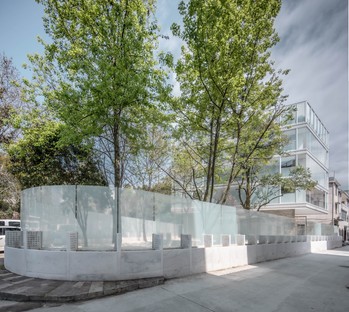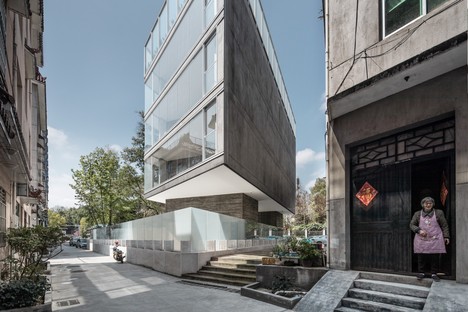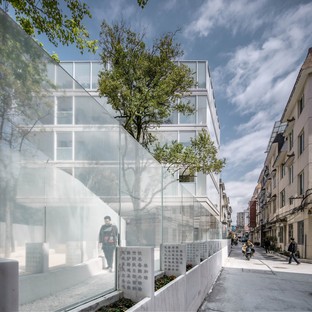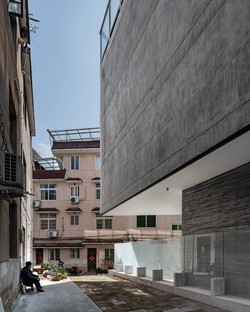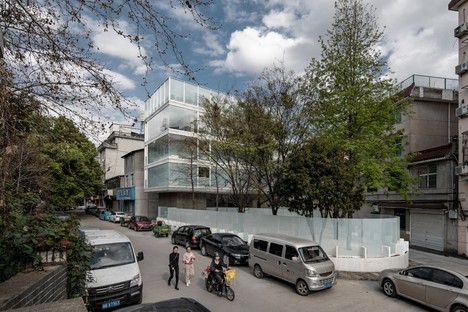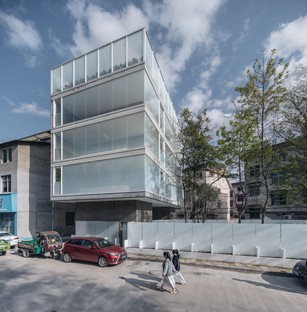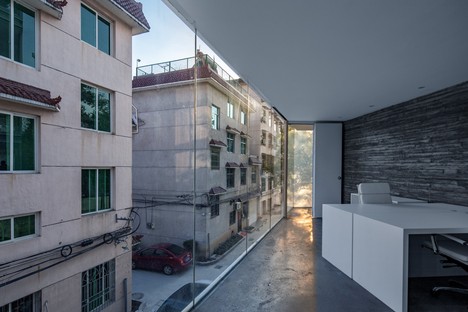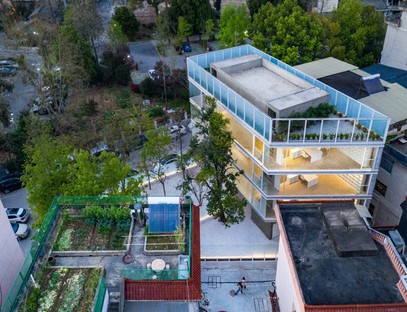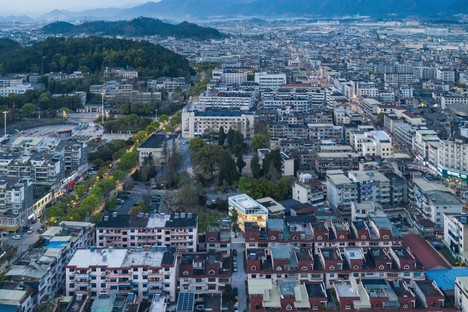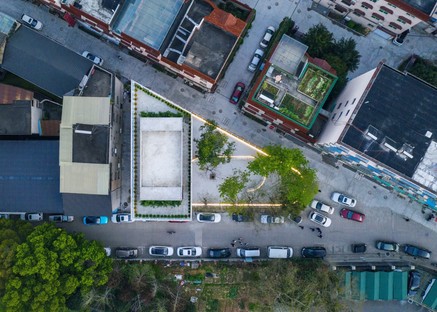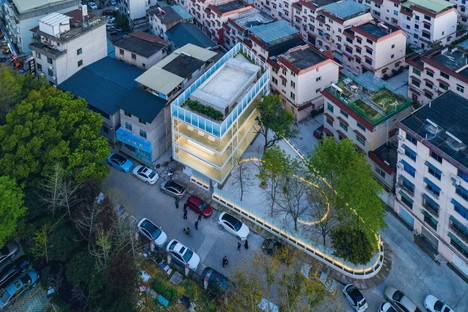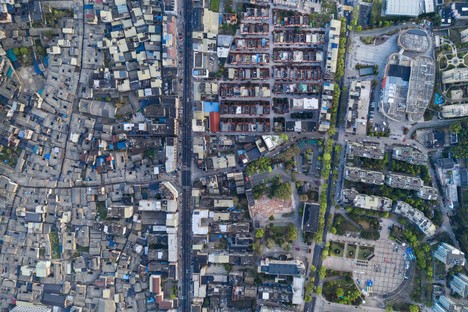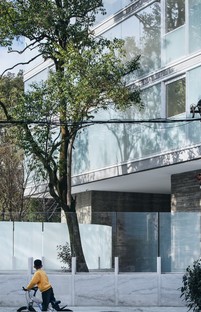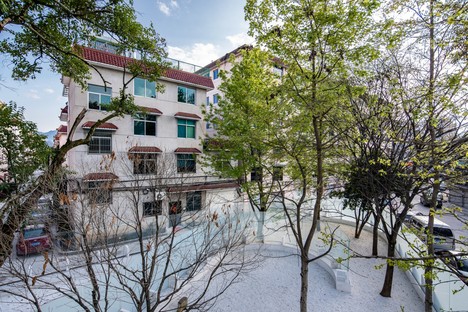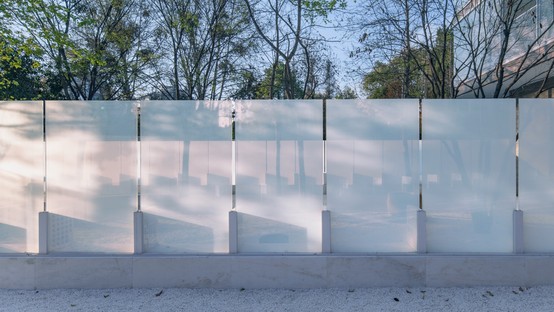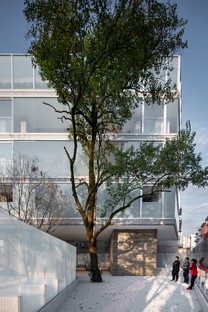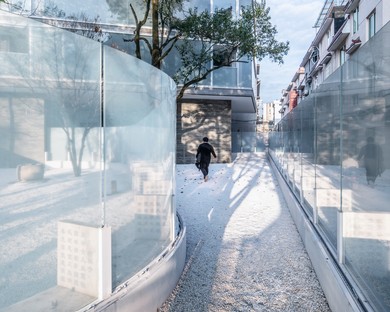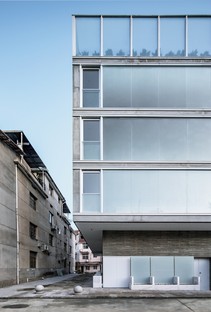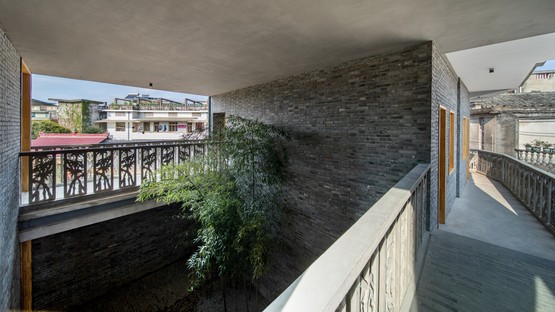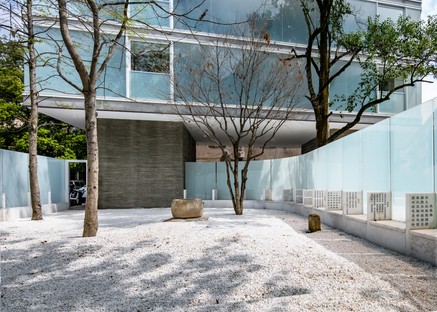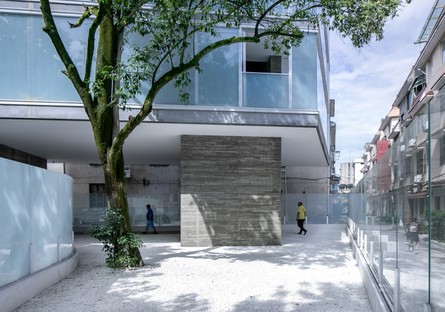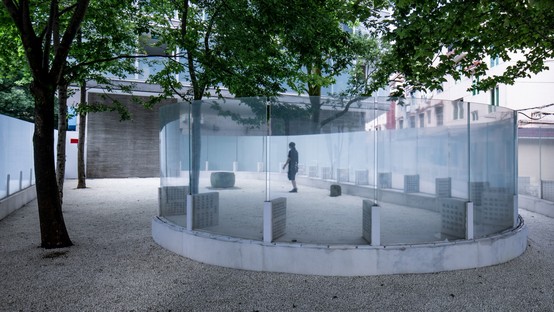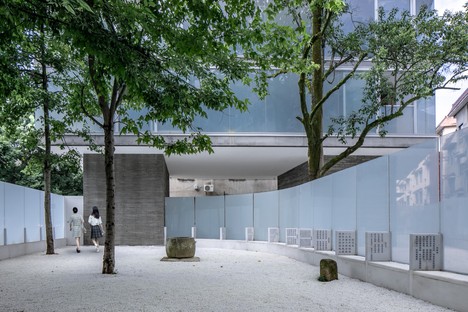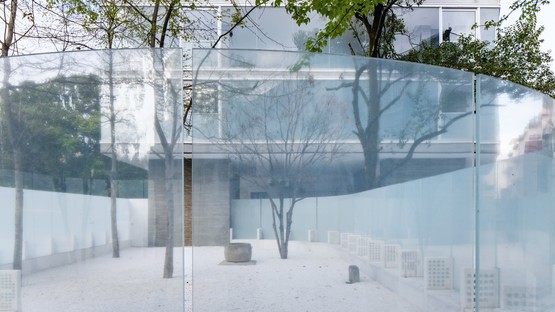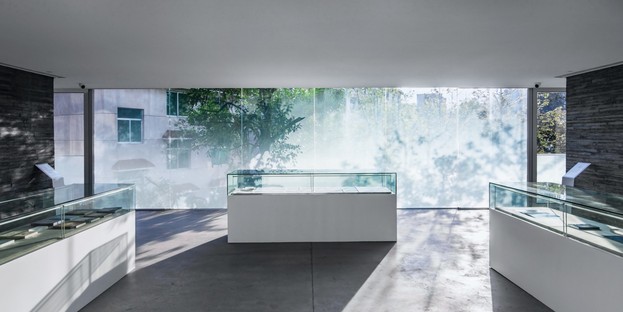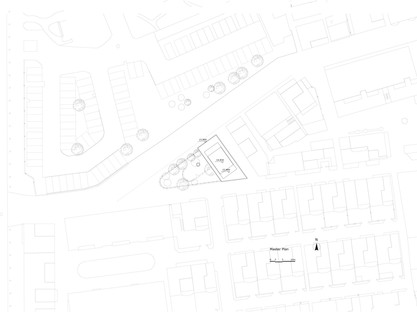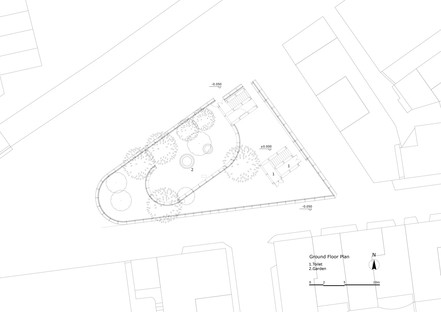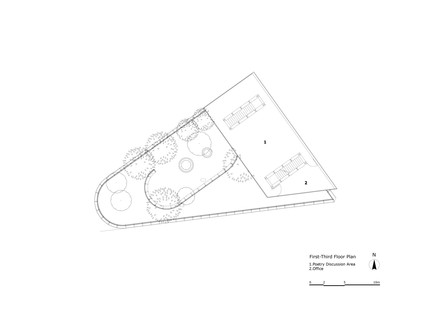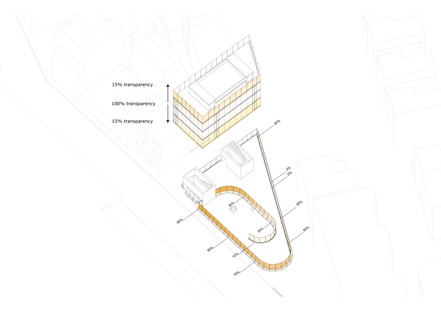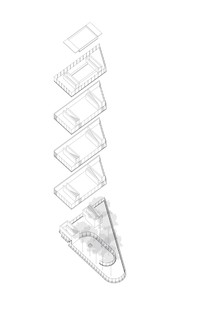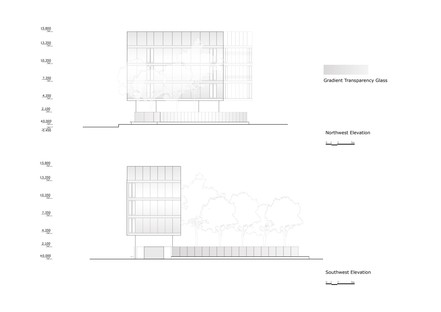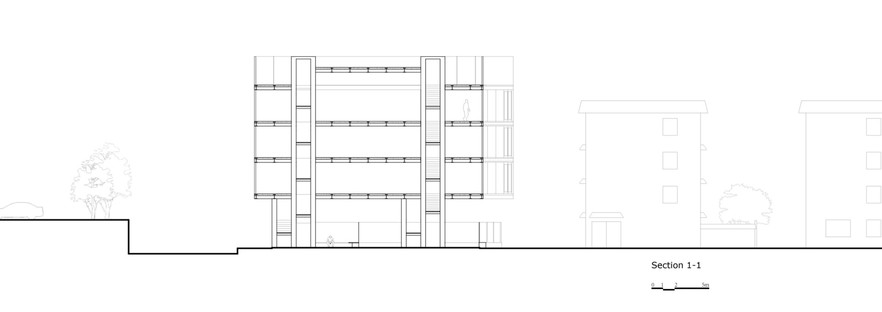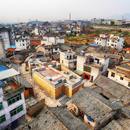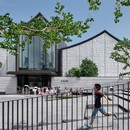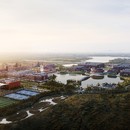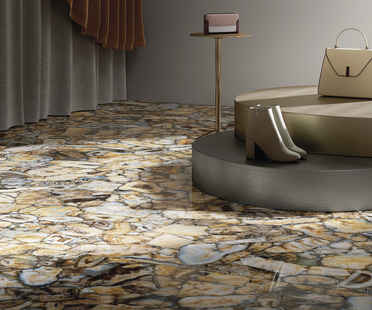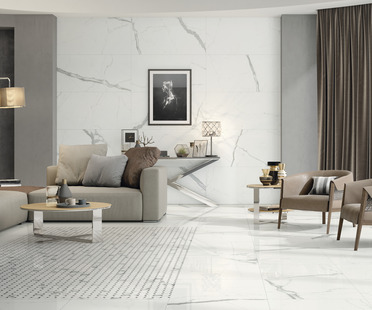05-01-2022
DnA Design and Architecture: Museum of Poetry, Songyang
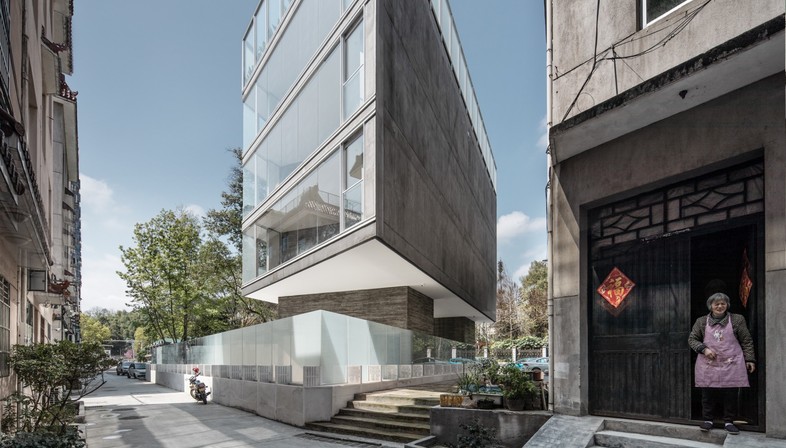
What constitutes a memorial site, and what is its significance in the modern era for the village or city where it finds its home? These are the big questions posed to DnA_Design and Architecture by the community of Songyang, China. In light of the architectural marvel that is the Wang Jing Memorial Hall, dedicated to the scholar who managed to create what is still handed down through the ages as the earliest form of encyclopaedia, Xu Tiantian, director of DnA_Design and Architecture, was called upon to return to the Songyang area to design a memorial to poet Zhang Yuniang, along with a museum of poetry.
This city in Zhejiang province was the birthplace of Zhang Yuniang (1250-1276), remembered as one of the most important cultural figures in local history and a highly esteemed poet, so much so that, according to the architects, she is frequently known as “one of the four great poets of the Song dynasty”, along with Li Qingzhao, Zhu Shuzhen and Wu Shuji.
A look into the history of Songyang reveals that, up until just a few decades ago, a forest of maple trees provided protection for a memorial stone for the poet, but with progressive urban development, this area was gradually eroded, with the trees cut down and the land integrated into building plans. Nothing more than the stone itself, along with a handful of maple trees, was left, surviving in a small triangular lot at the intersection of two side streets. Now deemed to be no more than a crossroads like any other, with a few trees fenced off inside an anonymous enclosure, the site faded into obscurity for most people.
A few years ago, the Songyang County Museum decided to restore the site and to rediscover the poet’s oeuvre, highlighting her tomb as a symbol of the importance of poetry in the local area. As such, it was not simply a question of dusting off the traces of the past, but indeed one of transforming them into a cultural opportunity by also creating a museum of poetry. As up until a few decades earlier, the site had been covered by forest, the idea came about that the surface area now available should include both a building, which would serve as an exhibition centre, and an open space to be transformed into a garden, a courtyard, an outdoor space for contemplation. The plan reveals a triangular plot which converges in the west where a high-traffic road crosses a neighbourhood alley, whilst running alongside the existing continuous façade on the eastern front, but without touching it. This turned out to be the most suitable place for the construction of a new multi-level building to house the museum and collective spaces. Zhang Yuniang’s tombstone, meanwhile, was left exactly where it originally stood, indicating the area earmarked for the garden.
A memorial is a place for meditation and contemplation, usually well-suited to allowing its visitors to concentrate. The decision to preserve and redevelop a green space required contact with the roadway, as well as a resolution for its relationship with all associated flows of traffic.
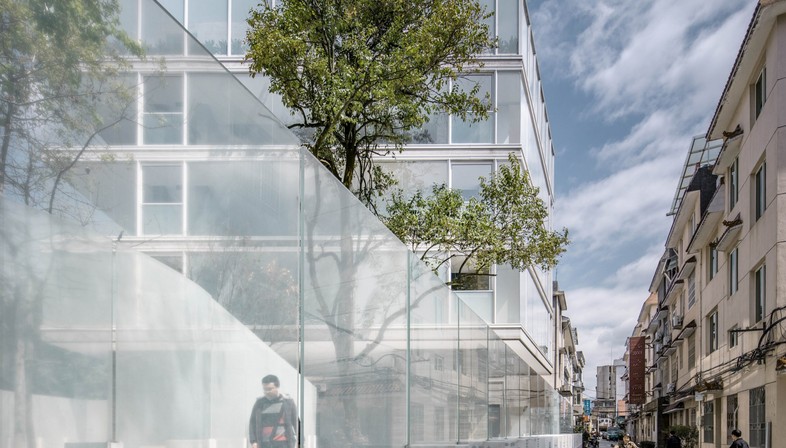
A bolstering of the boundaries seemed a necessary choice for the protection of the monument and the ‘sacred’ environment and to enhance the experience of contemplative isolation, but it also would have precluded any relationship between the monument and the neighbourhood in which it is located. As such, the new border fence was designed as a juxtaposition of glass panels of different opacities. Looking towards the main street, where the north entrance is located, and on the east side, where there is only a walkway separating the wall of the museum from the building next door, the border is completely opaque and the city remains firmly on the outside. To the south, meanwhile, where the alleyway runs alongside the garden, the enclosure becomes almost invisible, as the panels are made of an almost entirely transparent type of glass.
With this in mind, according to the plan, once visitors have passed through the main street entrance, their exploratory journey through the ‘sacred’ space follows a path with images of the street and the neighbourhood as its backdrop. A second, internal wall made of opaque glass then guides them along their way, gradually introducing variations in the perception of the space. Emerging from behind the glass, the foliage of the age-old maple trees planted there offers glimpses of a changing landscape. As the urban environment is left farther and farther behind, visitors are immersed in a more intimate and isolated area: the memorial space, which culminates in an ancient well and Zhang Yuniang’s gravestone at the end of the path. At the base of the glass panels, slabs of white sandstone are engraved with lines of her poetry, like an open-air library providing opportunities to pause and meditate on the verses.
At the end of the nature trail stands the façade of the museum building itself, an impressive backdrop in which the degree of transparency of the glass panels that make it up varies from highest on the central floor to lowest on the first and last floors. In the internal path from bottom to top, the relationship with the city is once again subject to evolution and transformation.
Mara Corradi
Architects: Xu Tiantian / DnA_Design and Architecture http://www.designandarchitecture.net/
Location: Songyang, Lishui, Zhejiang Province (China)
Client:Songyang County Museum
Lighting Design: Zhang Xin Studio, Architecture Department of Tsinghua University
Structure System: Steel frame shear wall structure
Design:2017.09 - 2017.12
Construction:2019.02 - 2021.02
Site area:534 sqm
Building area:628.72 sqm
Photographer: Wang Ziling










